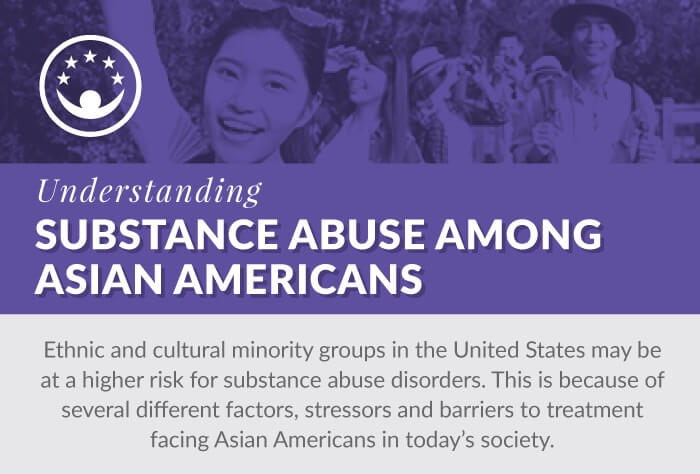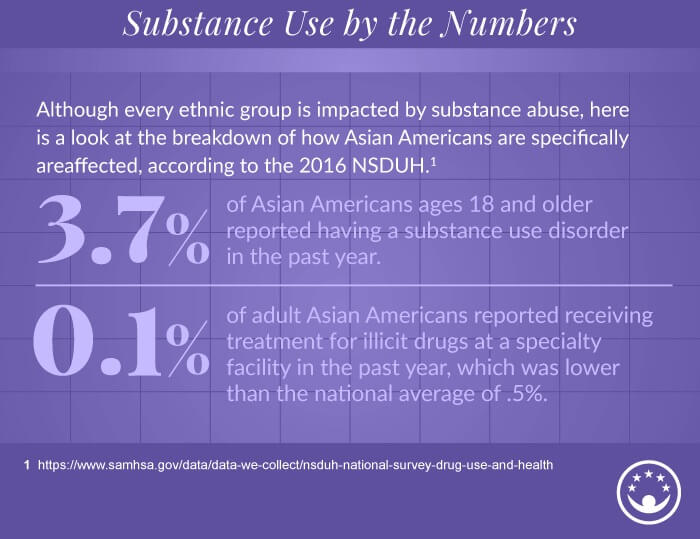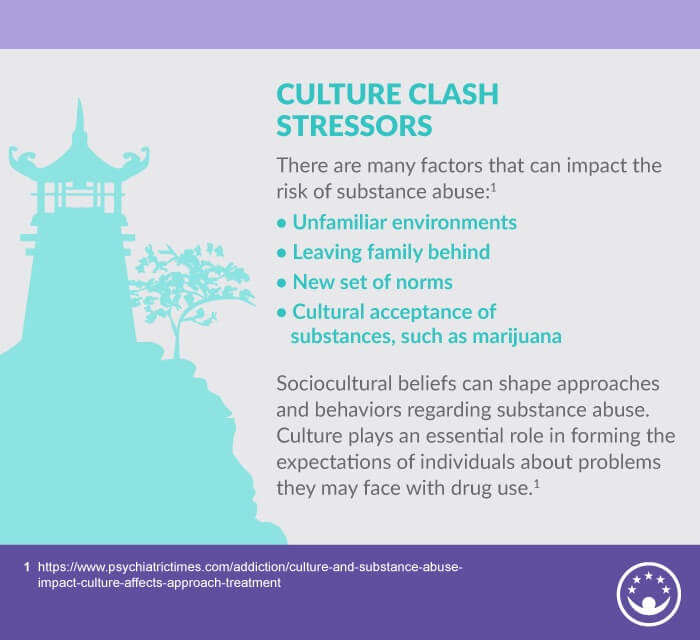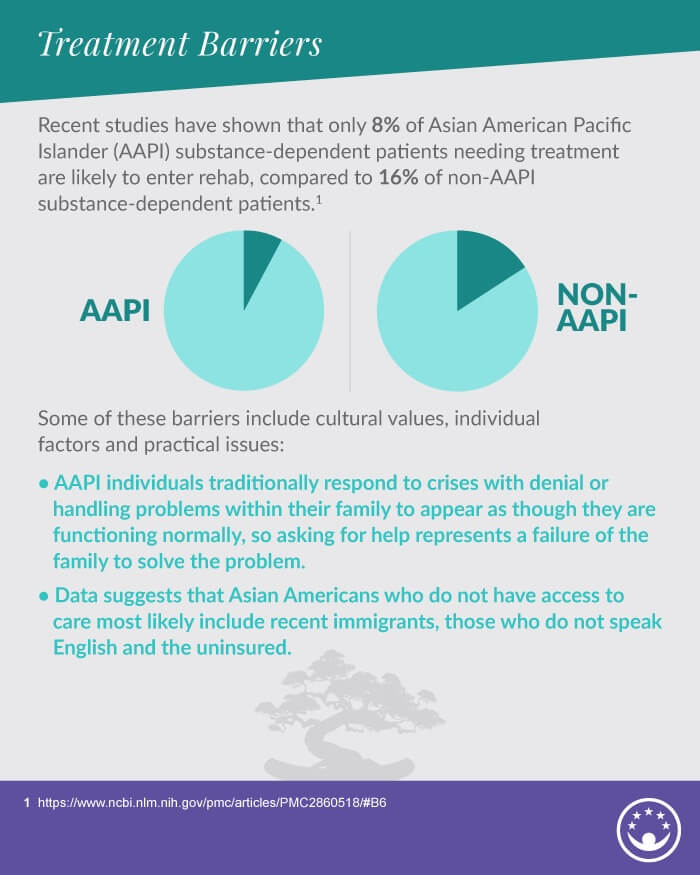Alcohol and Drug Use Among Asian Americans
The U.S. Bureau of the Census estimates that there are 19.3 million Asians (as of July 1, 2018) living in the United States, comprising 5.9% of the total population.1Asian Americans are the fastest growing racial group in the United States. The Asian population increased by 43% between 2000 and 2010, a faster rate than any other race group in the country.2
Although generalized national data reflects lower rates of substance abuse among Asian Americans, this should not imply that the impact of addiction on this thriving community is negligent. In fact, there is a concerning disparity between Asians and the rest of the population with respect to the rate of individuals receiving substance abuse treatment.

Substance Abuse among Asian Americans
As a group, Asian Americans have lower rates of substance use compared to the general U.S. population and all other subgroups within the population. Findings from the 2018 National Survey on Drug Use and Health include:3
- 4.8% of Asian Americans have a substance use disorder compared to a rate of 7.4% among the total population.
- 1.6% of Asian Americans have an illicit drug use disorder (almost half the rate as that among the total population).
- Asian Americans report lower rates of lifetime illicit drug use (27.6%) than Caucasian Americans (54.5%), African Americans (45.9%), and Hispanic Americans (37.7%).
- Rates of past month (6.7%) and past year drug (11.2%) use among Asian Americans are less than those of all other ethnic groups.
- Rates of alcohol use disorder (3.8%) and binge drinking (14.7%) among Asian Americans are significantly less than those of all other Americans.
Although Asian Americans are often studied as a single population, there are important differences in the rates of substance abuse among different Asian subgroups. A previous analysis of four large national surveys on drug use describes key differences among the U.S. Asian population that include:4
- Japanese Americans have the highest rate of binge drinking (13.1%) and Chinese Americans have the lowest (9.1%).
- Korean Americans have the highest rate of heavy drinking (3.5%) and Chinese Americans have the lowest (1.2%).
- Japanese Americans have the highest rate of cigarette smoking (21.6%) and Chinese Americans have the lowest (19.9%).
- Korean Americans have the highest rate of marijuana use (9.2%) and Chinese Americans have the lowest (2.9%).
- Filipino and Vietnamese Americans both have the highest rate of illicit drug use (7.9%) and Chinese Americans have the lowest (4.5%).

Treatment Options for Asian Americans
The Substance Abuse and Mental Health Services Administration reports that only 3.3% of Asian Americans needing substance abuse treatment receive such treatment.5 When compared to the rest of the country, Asian Americans are more than 3 times less likely to receive treatment than the general population (11.1%).
Sadly, many Asian Americans hide their substance abuse from family and friends until the consequences of their addiction are so serious (often resulting in scenarios such as arrest, hospitalization, or homelessness) that intervention is often forced onto them.

There are several reasons why Asian Americans are less likely to seek and receive treatment for substance abuse. Some of the cultural and practical barriers that make it harder for Asian Americans to get the help they need include:6
- Language barriers make it difficult for many Asian Americans to access addiction treatment services.
- Discussing mental health concerns (including substance abuse issues) is considered taboo in many Asian cultures.
- Asian Americans tend to dismiss, deny, or neglect their symptoms.
- Asian-Americans are more likely to seek help and support from personal networks such as close friends, family, and religious communities before consulting with professionals about their substance abuse issues.
- A general lack of awareness concerning the resources and services that are available.
There is little to no discrepancy between Asian Americans and the rest of the general population with regards to response to substance abuse treatment. Studies indicate that Asian Americans show similar rates of treatment retention and completion as other program participants, as well as comparable treatment outcomes.7

Because Asian Americans respond well to treatment when provided the opportunity, it is important that their underrepresentation in substance abuse programs is addressed and any barriers to treatment are removed.
Get Help Today
Call a knowledgable admissions navigator and start the admissions process today. They can listen to your story, help you explore various levels of care, and verify your insurance.
